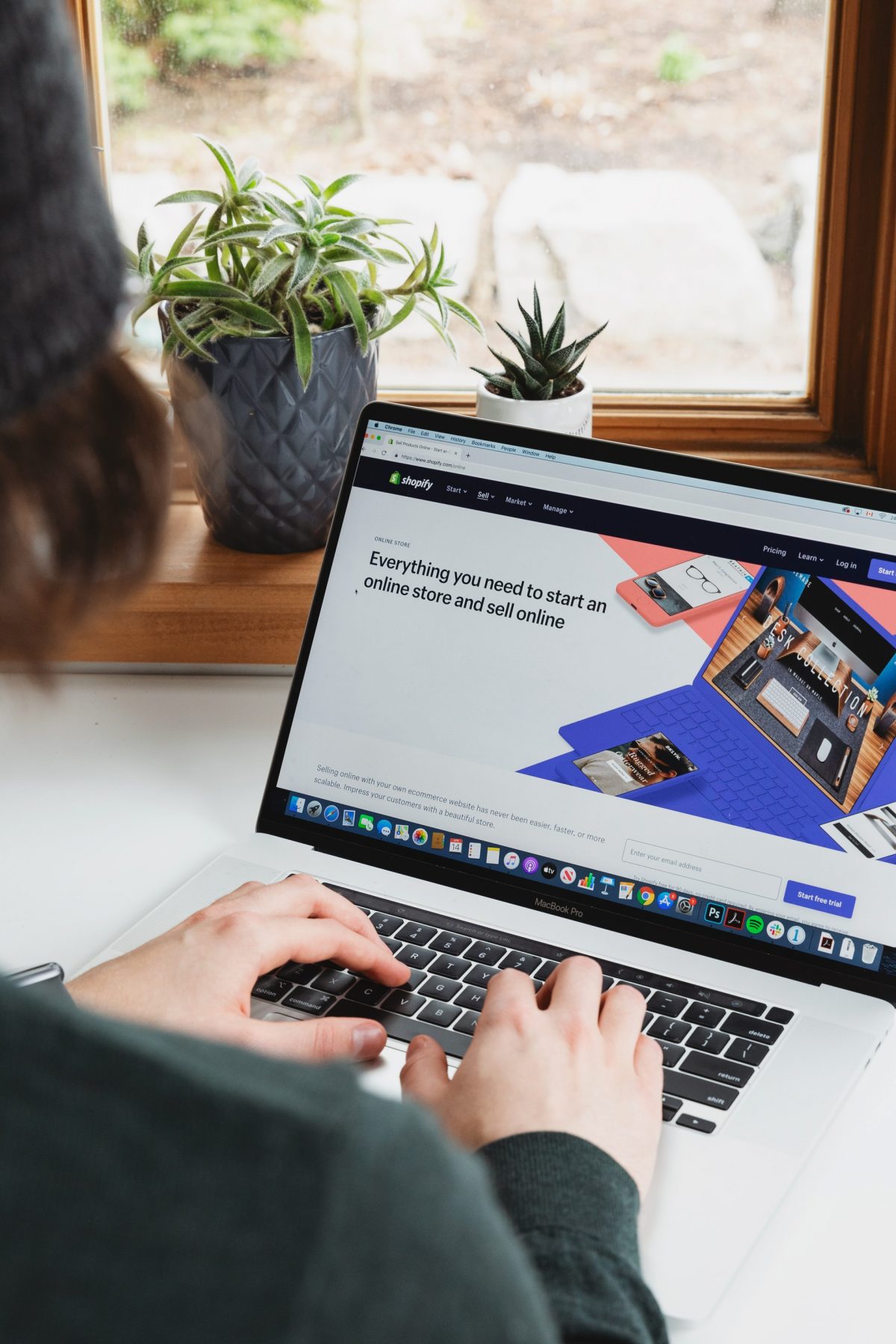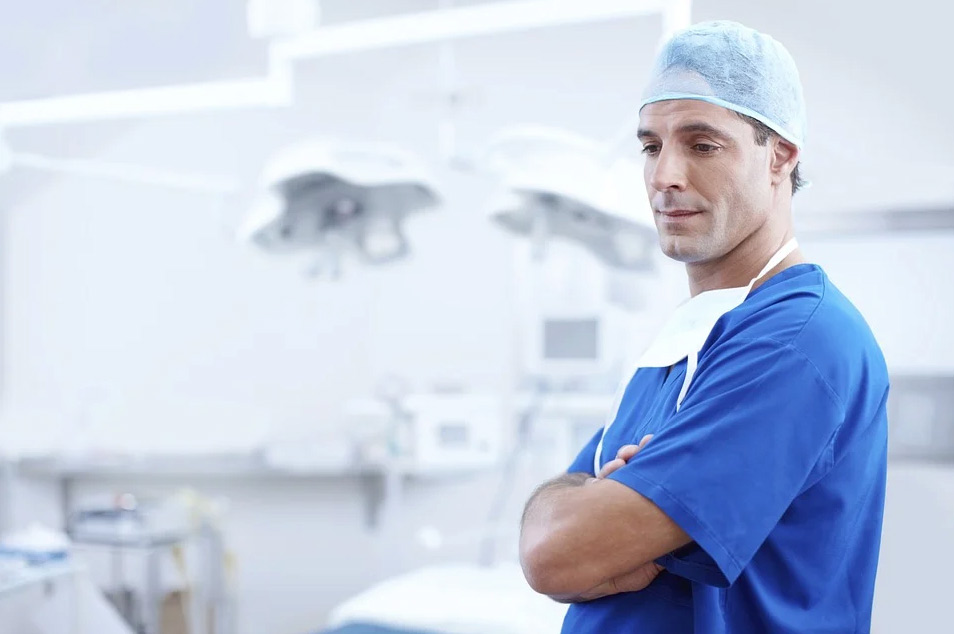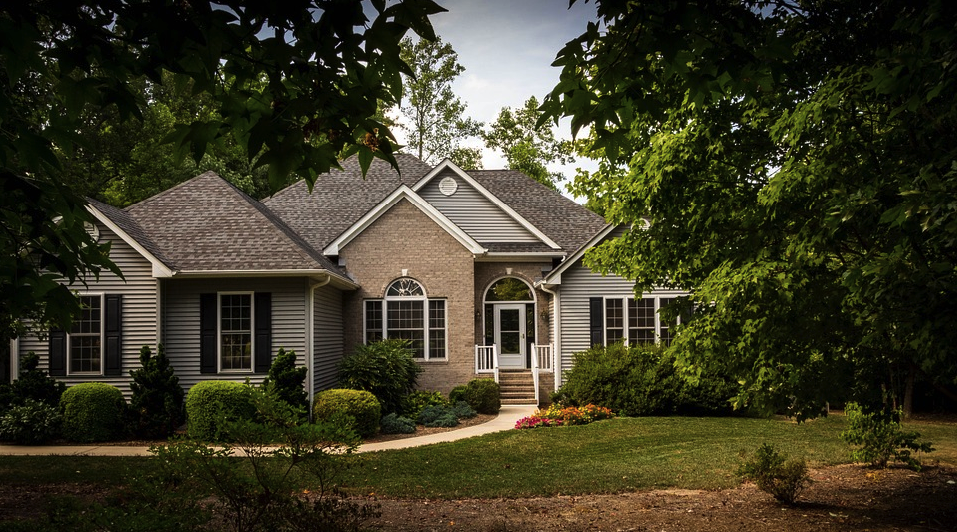Rules and regulations when buying cryptocurrency
In recent years, the cryptocurrency market has grown in size and popularity in the world. Each country has different regulations for cryptocurrency. Due to the increased demand for bitcoin and cryptocurrencies, nations have to update the appropriate legal regulations day by day.
With the rapid growth of the Internet, the use of cryptocurrencies is an inevitable trend. No country can completely ban this financial type. People can do cryptocurrency transactions secretly on the Internet. It is hard for the government to track cryptocurrency users or cryptocurrency exchange.
If you invest in crypto, buy bitcoin, or are interested in this investment, you should learn about the rules and how regulations may affect you. While some cryptocurrency regulations can slow down the buying, selling, and use of cryptocurrencies, others support the growth of this new asset class. Even an announcement about crypto regulation can cause prices to rise or fall dramatically.
Here are essential rules and regulations that investors must consider before buying cryptocurrency.
What is cryptocurrency?
Cryptocurrency is a medium technology of financial exchange with cryptographical functions on the Internet. Cryptocurrencies use blockchain technology to achieve decentralization, transparency, and immutability.
Cryptocurrencies are not controlled or regulated by any authority. And the cryptocurrencies’ price is determined by the supply and demand of their market. It is the most significant feature of a cryptocurrency. Due to the decentralized nature of blockchain, cryptocurrency is immune to government administration.
How is the cryptocurrency transaction?
Cryptocurrencies can be deposited directly between the two parties through the use of private and public keys. This transfer can be done with minimal processing fees, allowing users to avoid the hefty fees charged by traditional financial institutions.
Cryptocurrency properties
– Irreversible: Once you’ve confirmed, a transaction cannot be reversed. If you send money, you send it. If you sent your money to a scammer or if a hacker stole them from your computer, you could not take it back. There is no safety zone.
– Permissionless: No one can stop you. No need to ask anyone to use cryptocurrencies. It is just a piece of software that anyone can download for free. Once installed, you can buy Bitcoin or other cryptocurrencies.
– Fast and global: Transactions are spread almost instantly across the network and confirmed in minutes. Since they happen in a global network of computers, they don’t care at all about your specific location.
– Virtual pseudonym: Neither the transaction nor the account is connected to the user identity in the real world.
– Security: Cryptocurrency funds are locked into a public-key cryptosystem. Only the owner of the private key can send cryptocurrency. The strong code and the magic of the big numbers make it impossible to break this scheme. A Bitcoin address is more secure than Fort Knox.
Why should you invest in cryptocurrency?
Cryptocurrencies have been popular for many years. However, the majority of people are not aware of it. As a result, people don’t think about trying to invest or trade cryptocurrencies.
Of course, cryptocurrencies are risky – just like any other investment with a high potential return. However, it also offers the following obvious benefits.
You are the owner
There is no other electronic cash system where your account belongs to you.
Fraud protection
Once the cryptocurrency is created, all confirmed transactions are stored in a public ledger. All the identity of the coin’s owners is encrypted to ensure the legality of record keeping. Because money is decentralized, you own it. Neither the government nor the bank has control over it.
Identity theft
The ledger ensures that all transactions between “e-wallets” can calculate the correct balance. This public ledger is also known as the “transaction blockchain”. Blockchain technology ensures secure digital transactions through encryption and “smart contracts” that make entities virtually vulnerable to attack and free of fraud.
Instant payments
Blockchain has brought value to cryptocurrencies. Ease of use is the reason why cryptocurrencies are in high demand. All you need is a smart device, internet connection, and instantly become your bank making payments and money transfers.
Accessible
More than two billion people have access to the Internet but do not have access to traditional exchange systems. These individuals are entering the cryptocurrency market.
Which cryptocurrency to invest in?
Although Bitcoin is a famous cryptocurrency, investors and users should know about other cryptocurrencies. Furthermore, some aspiring cryptocurrency traders have also found that investing in IOTA can be a fantastic way to diversify their portfolios. Accordingly, if you would like to learn more about das IOTA Potential (the potential of IOTA) then you can find plenty of helpful resources on the Coincierge website. For now though, let us discuss the most popular cryptocurrencies today.
Bitcoin
Bitcoin is the first and most famous cryptocurrency.
Bitcoin is known as the top digital standard through the entire crypto industry. Now, people use Bitcoin as a global payment. Cybercriminals also sell or buy Bitcoin in the darknet markets or ransomware. For seven years, the Bitcoin price has increased from zero to 650USD and more than 200,000 daily transactions.
Ethereum
Ethereum takes second place in the cryptocurrency top ranking. It is a product of Vitalik Buterin. Unlike Bitcoin, its blockchain not only can process the complicated transaction but also complex contracts and programs due to its function of validation in so-called states.
Ripple
Although Ripple has a native cryptocurrency – XRP, it is more about a network that processes IOUs than the cryptocurrency itself. XRP, the currency, does not act as a vehicle for storing and exchanging value but also acts as a token to protect the network from spam.
Ripple, unlike Bitcoin and Ethereum, has no mining activity as all coins are pre-mined. Ripple has found immense value in the financial space as a lot of banks have joined the Ripple network.
Litecoin
This is a viable alternative to bitcoin. It was created in 2011 by Charlie Lee. After bitcoin, it ranks third in terms of time and lifetime of cryptocurrencies. Even if litecoin did not get as much attention as expected, we still have to admit that litecoin is much faster than bitcoin and that its transaction fees are almost zero.
Dash
Dash was launched in 2014 and has become one of the largest peer-to-peer networks of master nodes. Hence, Dash can provide additional storage and a secure environment for users.
Rules and regulations when buying cryptocurrency
1. Reading is the basic knowledge first
You should spend time to read what cryptocurrencies and blockchain technology is, and the different types of coins, wallets, and transactions.
Update the latest information on cryptocurrencies in trusted and reputation media channels.
By building up your knowledge, you will make decisions and take opportunities confidently.
2. Only invest what you are prepared to lose
If you are a beginner, you should start a small investment first. Buying Bitcoin or any other crypto is volatile. You can gain much, but you might lose what you have invested in too.
3. Consider carefully the type of cryptocurrency you buy
Research the crypto price. The circulating supply and the real-world will value the coin.
Large supply often dilutes the price of a coin, and if such a cheap coin has little to no practical utility, then there is no reason to assume it will magically rise in price.
Read about the coin’s background, its origins, how it fits into the larger business plan of the supplier, and how the crypto community accepted it. You have to follow the crypto-related events and hard fork updates, as these events tend to influence market trends.
4. Consider carefully where to buy crypto
You can buy cryptocurrencies from online strangers (not recommended), over-the-counter (OTC) kiosks online, at stores affiliated with Bitspark, at crypto ATMs, or on an exchange.
Wherever you buy, be sure of the seller’s credibility. You must look up recent reviews, comparison sites, and user ratings. If you are going to buy in OTC consider using escrow service, so you will not transfer money without ever getting your cryptocurrency back. If it’s an exchange, find out if it’s easy to trade into other coins, what coins they support, and what you need to do if you want to transfer your money to another wallet or revert to fiat.
Lastly, you have to understand the fees you will pay when buying or trading coins.
5. Ensure security
In the cryptocurrency market, you keep the key, and you control the coin.
Do not store your keys in a wallet that isn’t entirely yours.
Buying cryptocurrencies from a centralized exchange and some OTC, usually means your money is not under your control. If an exchange gets hacked, you lose money.
If you have more than $500 in cryptocurrency make sure you buy a hardware wallet like a Trezor or Ledger and get in the habit of storing a large portion of your money in an ‘offline’ device. This way will keep your money safe from hackers.
In addition to security considerations, when handling your cryptocurrency and transferring it to another wallet, double-check the address you’re sending. Transferring money to the wrong account means it’s very hard to get it back.
6. Remember to buy low, sell high
As you increase your knowledge of cryptocurrencies, you will value coins by themselves by their value and read the market depending on your understanding. While buying when the price is low and selling when it is high seems sensible, it is really about distinguishing the hype from solid trends and seeing the whole picture.
Instead of chasing the market trend, you should anticipate or wait until the hype passed before buying: work on vision, instead of emotion.
7. Do not overtrade
Instead of choosing between buying and selling regularly or holding a currency for an extended period, you should find an intermediary path and dedicate part of your investment to well-established currencies.
However, you should not “over-trade” constantly switching to other currencies due to worries about low trading volumes. When trading, be sure you will place orders with enough liquidity. Don’t forget that the transaction fees to recover the losses.
In conclusion
As with any other highly profitable investment, cryptocurrencies carry a specific risk – but they are even more offset by its independence and high profitability.
Investing in cryptocurrency is similar to exchanging your money in a new country. Bitcoin, Litecoin, and Ether are a few examples of “forex” that operate in a very specific context in certain online communities.
Just remember that exchanging any currency is built on shared trust.
We hope the basic information provided above can help you understand the rules and regulations when buying cryptocurrency.
Provided By VAT reporting software company, Sovos

5 Essential Tech Tools to Boost Productivity in Your HR Department
Technology is rapidly transforming the business sector and every industry in the world, so it should come as no surprise that HR experts are increasingly adopting new tech and digital transformation to elevate productivity, efficiency, and ensure employee success. From recruitment automation for the remote workforce, all the way to better employee monitoring and management, improved communication and a better company culture, HR specialists stand to gain a lot by adopting feature-rich software solutions that will help them achieve their goals faster while helping push the company forward as a whole.
That said, with so many proprietary tools out there, it can be difficult to select the best software for your needs, and it can be easy to overspend on the tools you don’t actually need. That’s why today we’ll be going over the five essential tech tools you should integrate into your HR department in order to ensure its long-term success, especially during the COVID-19 crisis.
Human resource management system
First and foremost, it’s important to note that a comprehensive human resource management system should encompass numerous processes and tasks – this is not a piece of software that does a single job, rather, it’s a system of tools that covers a range of HR processes. Within your HR management system, you can have several key tools (built-in or integrated from external tools) that include recruitment, training, attendance tracking and employee monitoring, payments and payroll, contract labor and remote work, appraisal, performance, shift, and absence management, and more.
Depending on your needs, you will integrate as many or as few tools as you need to manage an efficient and effective remote operation, but also to make in-house employee management a breeze. This is typically a cloud-based system with various integrations and add-ons you can use as you grow and as your needs start to change.
Advanced recruiting software
Recruitment strategies and tactics are always changing and evolving with the leading industry and market trends, but amidst a global crisis like the COVID-19 pandemic, recruitment is bound to change drastically. Now that companies are forced to send their employees home or recruit remote talent from across the globe, HR specialists need to leverage recruiting software to make talent acquisition more efficient and effective, particularly for remote positions.
Aside from leveraging digital platforms like social media networks and specialized job-hunting websites, your HR staff should adopt recruiting software that has all the features they need for quick and successful talent acquisition. These features include candidate sourcing, applicant tracking systems, AI-driven recommendations, reports and analytics, enrichment features, and more.
Cloud-based communication tool like VoIP
Communication is the essential pillar of success in HR and your company as a whole, which is why you need to adopt innovative communication tools to improve productivity and efficiency instead of trying to make the old email-plus-phone combo work. The reality is that traditional phone systems simply don’t have the features you need to communicate effectively with employees and applicants, which is why companies are rapidly switching to VoIP (voice over internet protocol) nowadays.
Now, there are many VoIP providers out there, so it’s important to check out professional reviews and opinions to find what some of the best VoIP features are and which of the providers offer the most cost-effective phone plans. Ideally, your provider should equip your HR department and your entire business with features like low-cost national and international calls, video conferencing, chat tools, scheduling and analytics, mobile apps, and more.
Comprehensive payroll software
Some would say that payroll is nothing more than handing out paychecks, but in reality, payroll encompasses numerous processes that require meticulous management by your HR staff. Yes, handing out paychecks is one of them, but so is tracking and calculating bonuses based on performance, giving out perks and rewards, monitoring absence and overtime, and much more.
In fact, payroll is quite a complex process because it effectively shapes morale and influences your employees’ level of happiness in the long term, so you need to have the right payroll software at your side. The software should automate almost all of the aforementioned tasks to help you create personalized plans for every employee, and help you devise individualized advancement programs.
Onboarding automation tools
Lastly, never underestimate the potential of a great onboarding tool to help your new employees feel right at home and become productive members of your team. Onboarding automation not only saves time and money, but it allows your HR staff to bring a more well-rounded onboarding experience to the employee so that they can start contributing from day one instead of taking weeks or months to find their bearings in a new work environment.
Modern HR encompasses a wide range of mission-critical processes, and if you modernize your HR department with the right tech, it can help your company thrive on numerous fronts. With these tools at your side, you should have no problem acquiring and retaining the top talent in the industry.

eCommerce Fraud: How It Happens, How You Can Help Stop It
“There are many types of eCommerce fraud, all of which are extremely concerning for consumers and online businesses alike. eCommerce fraud is widespread: According to econsumer.gov, in just three months — January to March 2019 — there were 5,305 eCommerce fraud reports in the U.S. In addition to being rampant, eCommerce fraud is constantly evolving, as cybercriminals develop new techniques to sidestep the security measures deployed by online business websites.”
With all this in mind, it is important for eCommerce business leaders to stay well-informed about eCommerce fraud and patch whatever vulnerabilities may exist in their security frameworks. This is where the infographic below, How to Prevent eCommerce Fraud, will prove helpful. The infographic presents a high-level overview of common types of fraud, and several specific steps online businesses can take to reduce the threat.
As the infographic points out, enhancing online security not only helps to deter fraud but also serves online businesses in more constructive ways. For instance, we have reached the point where simply having an HTTPS website is immediately reassuring to many if not most online consumers — the fact that Google has been labeling non-HTTPS sites “Not Secure” on its Chrome browser since 2018 has gone a long way toward reinforcing this perception.* When customers perceive that an eCommerce store is secure, they are naturally more inclined to order and to order repeatedly.
In a similar way, when an eCommerce business requires customers to use a complicated password and change it periodically, they may feel some initial irritation — but once those customers step back and reflect, they will realize that the policy is there to protect them by keeping their sensitive data as secure as possible.
Because data breaches have become so common, so massive, and so widely publicized in the media, public awareness of — and fear of — cyberattacks has never been greater. If your eCommerce business has shied away from implementing security practices out of fear of shopping cart abandonment, those fears are most likely misplaced.
The key to preventing eCommerce fraud is never to become complacent. Some organizations think, for instance, that simply converting to HTTPS is enough. It isn’t. While HTTPS is practically essential — table stakes, if you will, in the fraud prevention game — much more needs to be done to help create a solid barrier against cybercriminals. As the infographic says, implementing as many of the fraud prevention activities as possible is the surest way to help tip the odds strongly in your favor. For more information and insights, please continue reading below.
About the author
Dori Bright is Senior Vice President of Marketing Intelligence and Small Business Market Development at Fiserv, a leading global provider of eCommerce payments and mobile payment solutions, helping businesses connect with customers through physical, digital, and mobile payment experiences that drive commerce.
Infographic created by First Data

5 Leading Trends in Modern Healthcare Design to Revolutionize the Patient and Staff Experience
Healthcare is an industry that is constantly changing and evolving with the prevailing technological advancements, scientific discoveries, but also socio-economic shifts. It’s not just the leaders and visionaries that are taking the industry forward, it’s also the tech gurus and innovators, the interior designers and architects, and also the patients themselves who require a different kind of experience. Needless to say, your typical healthcare institution is not what it used to be mere decades ago.

And that’s a good thing. Healthcare needs to progress and change to accommodate the needs of a rising population and specific demographics. Laboratories need to be more efficient, the medical staff more specialized, and interiors need to adopt a more modern approach to ensure patient and staff happiness. With all of that in mind, today we are taking a look at modern healthcare design and what trends will prevail in 2020 and beyond.
The move towards organizational specialization
Modern problems require modern solutions, as they say, and the modern patient demands a healthcare environment that can accommodate their exact needs. Nowadays, hospitals and medical institutions in general are becoming more specialized and are narrowing their scope of services and expertise to address the challenges of specific patient demographic. Not only does this allow administrators to run a more efficient operation and optimize payroll expenses, but it also allows key stakeholders to build a recognizable brand.
For the patient, this ensures a peace of mind and provides them with specialized staff and medical equipment necessary to address their unique medical condition. No longer are patients willing to run from hospitals and medical practices to get things done – nowadays they want and need specialized and comprehensive treatment under the same roof.
Weaving technology into the space
It should go without saying that the healthcare industry is one of the most notable early adopters of technological innovation. No surprise there, of course, as hospitals and private practices need to invest in modern technology to minimize expenses, make diagnostics and treatment more efficient, and instill trust and respect in the hearts and minds of their patients.
While it might be difficult for certain patient groups to get the hang of certain technological tools, it’s nonetheless important to note that even seniors are nowadays utilizing technology on an advanced level. This means that you can weave medical and administrative tech into your medical practice with ease and allow your staff as well as your patients to take full advantage of its functionalities.
Focusing on specialized lighting schemes
One of the most important elements of modern healthcare design is the lighting. Needless to say, you need to make sure that ample natural light permeates the rooms and hallways of your hospital or medical practice, but the most important thing is to scale and optimize the artificial lighting. Lighting design is essential for compliance, patient and staff satisfaction, as well as ensuring energy efficiency over the long term.
For that reason, it’s important to work with experienced lighting designers and research clean room lighting at https://buck.lighting/products/clean-room-lighting/ to find lights that are manufactured according to the right industry standards and are durable and long-lasting. You also need to talk to the manufacturer to find the right hues for every room and working environment, as lights should differ depending on whether you’re in a patient’s room, the waiting room, or a clean room.
Emphasizing sustainable practices
Speaking of design considerations that emphasize energy efficiency, it’s important to note that the medical industry is rapidly moving towards greater sustainability. This has more to do with hospital administration, financial saving, and compliance than patient care and satisfaction, as hospital administrators need to find ways to make the business stay afloat over the long term.
This is why investing in energy-efficient lighting, appliances, equipment, and passive conservation features is so important in the modern world. It’s also important to invest in software solutions like customer data platforms to make better long-term decisions that will deliver results while reducing extraneous financial expenditure.
Breaking the barrier towards nature
Last but not least is the adoption of the biophilic design. Some of the best medical office decor ideas include the introduction of natural elements and sustainable materials to create a more serene workspace and instill peace in the hearts and minds of the patients. Nature can have a profound effect on the recovery process, so it’s also important to break the barrier between the interior and nature by designing hospital gardens and green spaces to help the patients feel more at ease. Over time, this leads to a more positive work environment and a higher success rate for the patients.
Wrapping up
Healthcare design is always changing, as it needs to accommodate the needs of the ever-changing market. Patients and medical professionals are looking for a better overall experience, so make sure to use these design tips to build a thriving medical practice of the future.

Take your email marketing to the next level with Artificial Intelligence
Artificial Intelligence (AI) has emerged as one of the most powerful tactics to raise the bar of email marketing campaigns. Effective email marketing is all about delivering the right content to the right people at the right time and AI helps you achieve this. There was a time when manual intervention was needed to craft relevant content for individual subscribers. However, with the advancement of AI and automation workflows, it became easier to send personalized emails based on subscriber behavior. No wonder, it is expected to yield $14 trillion of additional revenue and a 38% increase in profitability by 2035.
Before we look into the details of how to employ AI in email marketing, let’s throw light on basic principles of how it works.
Mechanism of Action of AI
AI is a tool with the help of which the computer can use a given set of data and perform a particular function through trial and error. The three steps in which AI works are:
i. Detect
First of all, AI discovers the most predictive attributes or elements in a set of data to ascertain which ones to consider and which ones to overlook.
ii. Deliberate
AI, then, compares the most predictive attributes and accordingly makes a recommendation or answers a question.
iii. Develop
AI can program and reprogram itself and mature with every iteration. Subsequently, it can modify and assess the data according to information or consensus derived from experiments.
With that said, we shall now discuss how you can adopt AI in your email marketing campaigns.
1. Subject Lines
According to conventional practices, a proficient copywriter would be allotted the task of drafting engaging subject lines, considering the target audience and their buying preferences. AI algorithms have made it possible to evaluate the results of your past email marketing campaigns and improve the subject lines to generate a better open rate and click-through rate.
You can use tools like Phrasee that works on the principle of “Natural Language Processing” to craft subject lines that can grab maximum subscriber attention.
2. Personalized emails
Targeted personalization improves customer engagement rate as suggested by 74% marketers. Predictive analytics helps to create complex algorithms that ultimately enable the creation of unique emails. Through AI, marketers can understand the behavioral patterns of the customers and predict their next purchase. Subsequently, you can use this information to assign predictive scores, thereby eliminating the inconsistencies of orthodox lead scoring method.
With the help of AI, you can build groups of audience who display similar kind of behavior. These groups of predictive audiences can bring higher revenue by enhancing subscriber engagement. Marketo and Salesforce offer such tools that allow you to execute AI-powered email marketing.
3. Email retargeting
Traditionally, marketers used to send out cart abandonment emails to all the customers within the same timeline. AI gives you the liberty to retarget the customers at the right time by considering their behavior and response time. For example: Some customers may respond to a cart abandonment email sent immediately while some others might take the decision to purchase a week after the cart abandonment. AI allows you to differentiate between these customers and send the retargeting emails at an optimal time while cutting down the cart abandonment rate. Salesforce provides a feature known as Commerce Cloud Einstein that proves to be a boon for ecommerce marketers by providing access to detailed predictive insights. These insights can be used to send customized recommendations to customers.
4. Automated testing
Once used as a two-dimensional process, A/B testing has now advanced to an omnichannel hyper-targeting model with the help of which you can carry out complex testing. It lets you test a number of variables in different permutations and combinations. Bandit testing helps you automatically get a hint about what kind of traffic your versions will get. In case it is found that one of the versions is performing better, bandit testig will attempt to increase traffic to that variant and reach to a statistical significance faster.
Wrapping Up
Subject lines, copy, testing, and retargeting – these are the top four elements in which you can incorporate the magic of AI. Besides, AI also lets you reach out to the person with intelligent and more humanized automated emails. So, if you are wondering how you can take your email marketing a step ahead and beat your competitors, AI is the answer for you.
Author bio
Kevin George is Head of Marketing at Email Uplers, one of the fastest growing custom email design and coding companies, and specializes in crafting professional email templates, PSD to HTML email conversion and free responsive HTML email templates in addition to providing email automation, campaign management, and data integration & migration services. He loves gadgets, bikes, jazz and eats and breathes email marketing. He enjoys sharing his insights and thoughts on email marketing best practices on his blog.

Top 5 Digital payment trends for 2021
In the last decade, technology has been gaining more and more influence on most aspects of our life. That includes shopping and making payments. The biggest shopping day of the year is Black Friday, and at first mention, the mind goes straight to long lines and large crowds at the mall. But, as it turns out, most buyers turn to online shopping instead of actually visiting the store.
Last year’s Black Friday broke all records when it comes to online spendings. Adobe’s analytics published that consumers spent $7.4 billion online. Yes, that’s billion with a B. And we don’t see that number going down with the pandemic and everything going on in 2020.
Because of how people handle it, and how quickly it exchanges hands, cash was always a potential vector of transmissible diseases. With COVID-19 still going on, the popularity of paper money is likely going to take a hit. What are the alternatives? If you aren’t familiar with other choices except for cash or credit card, this is the article for you. We are going to inform you about the best digital payments for 2021.
Infographic created by Clover Network, a retail POS company
EMV Chips Turn Cards Into Smart Cards
EMV stands for Europay, MasterCard, and Visa, but is most often referred to as a credit card with a smart chip. It uses the smart chip for storage of the data that is needed to process the transaction, unlike a mag stripe used by older credit cards.
EMV’s increased security is the reason more and more cards have chips nowadays. Unlike the mag stripe, which was a lot easier to clone, the chip is tamper-proof, thus making the card almost impossible to duplicate. Furthermore, EMV cards use a unique code for every payment, your bank then uses the code for the transaction, and once it’s used, it can never be used again.
Another plus for the use of EMV is the possibility of a contactless transaction. You can just tap the POS terminal, or even wave the card in front of it to make a payment. It allows you to use the card without putting in the pin. Contactless is the way to go in 2020.
You Might Be Using EChecks Already
If you went to the gym for a while, chances are, you used an electronic check without even knowing it. Most people do. Gym memberships are considered automatic payments, but in fact, they are fulfilled via eChecks.
By using eChecks, you only spend time when you agree on the terms for the first time, everything else is automatic. That’s the biggest advantage of electronic checks, significant time gets saved by both the client and the supplier, everything is done electronically. This type of online payment takes the agreed sum of money out of the payer’s account and transfers it to an overarching network, which deposits it to the payee’s account.
Have you ever thought that you’ll be able to forget about your bills and not even think about the due dates, but everything still gets paid on time? EChecks make that possible!
Home Assistants Can Do All the Work
In 2014, Amazon came up with the first smart speaker, and a few years later, Google Home and Apple presented their home assistants as well. Since then, smart speakers have been helping people with their everyday tasks. Unfortunately, most users still don’t believe in the safety of their information with home assistants, so they mostly rely on them for tasks with less risk.
Statistically, 82% of all consumers use smart speakers for seeking information, checking the weather, and making appointments, while only 28% dare to send money or make payments. The percentage is significantly lower due to security reasons most users have, but the future of smart speakers is still bright.
With big names like Amazon, Google, and Apple investing in developing safer home assistants, we can assume that the future of smart speakers is secured. Also, Business Insider estimates that the usage of virtual assistants will unquestionably grow in the next few years.
Mobile Wallets Are Convenient
A mobile wallet is exactly what it sounds like, a wallet on your phone. What better way to lower the clutter you carry around in your pockets than to combine a phone and a wallet in one thing. That’s why the number of mobile wallet users is growing consistently.
Big companies like Samsung, Apple, and Google already have their applications that are used as a wallet, so we can expect others to follow with similar apps in the future. The possibility of just tapping your phone to make a payment makes the use of a mobile wallet practical, which a lot of buyers are looking for these days. Also, the app can store your loyalty cards, credit cards, and multiple companies can work together to make the experience extra convenient for you.
Use Your Fingerprint to Make a Payment via Biometric Authentication
This way of payment makes you realize that we live in the technological future. Biometric authentication uses a person’s biological and structural characteristics to verify who is trying to make a transaction. This includes methods like fingerprint scanning, facial and iris recognition, or even heartbeat analysis or vein mapping.
The main goals of all the transactions that are being invested in currently are security and fraud protection. It’s hard to find something more secure than bio authentication, and that’s why we’ll see more of it shortly. Stats suggest that by the year 2021, more than 18 billion biometric transactions will be completed, every year.
5 Ways to Use Fitness to Reach Your Entrepreneurial Goals
Photo by David Iskander on Unsplash
Going down the entrepreneurial path is an exciting prospect, and if you stick to your goals and make some smart decisions, you could very well become a millionaire in the near future and build a thriving business. However, this is often easier said than done, and many aspiring entrepreneurs will abandon their dreams early on for a number of reasons – some of which include stress, financial troubles, or the sheer strength of the competition.
Needless to say, you have to be one tough cookie both physically and mentally if you are to overcome the challenges that your new career path throws your way, and one of the best ways to do that is to adopt a fitness lifestyle. Being healthy physically is a powerful way to enhance your mental fortitude and capacity on all fronts, so let’s take a look at the five ways you can use fitness to reach your entrepreneurial goals more efficiently and effectively.
Use exercise to stay energized
It might seem counterintuitive, but vigorous exercise actually improves your energy levels and keeps you from burning out during a particularly stressful day, especially if you’re running all over town from meeting to meeting and you have to maintain a hectic schedule throughout the week. The last thing you want to do is to sit at a desk all day long or to refrain from exercising altogether in fear that it will negatively impact your energy and zeal, because regular exercise can improve the production of endorphins to give you that energy boost when you need it most. If you want to get the full benefits of exercise, make sure to work out early in the morning before you take on the challenges of the day.
Stay stress-free with meditation and yoga
Photo by Carl Barcelo on Unsplash
Of course, fitness is not just about lifting weights or doing a lot of cardio, it’s also about learning how to take care of your body and mind from within, and how to center and ground yourself so that you can banish stress and anxiety. Staying calm and calculated is one of the biggest challenges that aspiring entrepreneurs struggle with, simply because of the stressful nature of their vocation.
This is why you should look to introduce mindful meditation into your day, and a quick daily yoga session to loosen those tight areas in your body and tune out the stress and the noise. It only takes ten to fifteen minutes for a quick meditation or a few yoga poses, after which you will be able to come back to the fight more powerful and focused than before.
Get your nutrition in order
A big mistake business leaders and new entrepreneurs will often make is that they will focused solely on one aspect of fitness – the workouts, instead of focusing on their nutrition as well. Fitness is a lifestyle, and it encompasses exercise, diet, sleep, and various other important factors, of which your nutrition can make all the difference, so you need to eat healthy if you want to succeed.
If you’re running on a pretty hectic schedule, then let healthy supplements lend a helping hand, and choose a good whey protein powder to make sure you’re getting enough protein throughout the day to fuel your body and mind. You can add a multivitamin in there as well, and make sure to get enough magnesium and zinc in your diet or in supplement form to stay sharp and energized at all times.
Build confidence and resilience
One of the biggest benefits of sticking to a fitness lifestyle is that it helps you build the confidence and resilience you need to keep pushing towards your goals, to overcome every obstacle, and to simply stick it out when the going gets tough without burning out. When you lift heavy at the gym or when you set a new running record, you will feel like there is nothing you can’t achieve, and most importantly, you will feel like a true winner – as all successful entrepreneurs are.
Don’t forget about sleep
Photo by Priscilla Du Preez on Unsplash
Last but not least, you shouldn’t forget or neglect the importance of quality sleep. Sleeping for eight hours every night and going to bet at the same time (and rising at the same time, as well) can do wonders for your overall health, your mood, and your energy levels. Be sure to commit to a strict sleeping schedule and you will have no problem managing your entrepreneurial lifestyle with ease.
Wrapping up
If you’re thinking about becoming an entrepreneur, or if you’ve already begun your entrepreneurial journey, you should consider adopting the fitness lifestyle to achieve your goals faster. Remember, the key is to stay healthy mentally and physically so that you can continue growing your business, and enjoy your new-found fortune for years and decades to come, so let fitness help you get there.

Why Your Business Needs Digital Marketing Services
With the onset of the novel coronavirus, times are strange. The coronavirus has changed the way we live and work, and the way that businesses are reaching their customers. Since the pandemic began and people have been forced to stay in, online sales have been steadily on the rise in all corners of the country. For many businesses, staying relevant and adapting to the new normal is crucial for survival. Ramping up your business’ online presence is going to be the single most important thing you do during this time. Here’s some tips for using digital marketing to your advantage in pandemic times.
What’s So Special About Digital Marketing?
Digital marketing offers new abilities that are not possible with most traditional marketing avenues. Taking your advertising online not only opens up a world of new channels for customers to find you on, but also creates a sustainable way to obtain information that you can use to bring in new customers. Digital data collected from online advertising channels can be used to paint a better picture of who your customers are, what does and doesn’t resonate with them, and how to get them thinking about your product again. This customer data makes it possible to retarget customers and reach them at various touch points of the sale cycle, which is pivotal in helping them make a purchase decision.
Tactics You Should Be Using to Your Advantage:
Digital marketing strategies can have as many or as little tactics as you want, but a unified, exhaustive approach tends to work best. Think of digital marketing as an ecosystem, each aspect feeds into the others to create an experience. Some of the most common tactics include:
Paid Media & PPC
One of the most effective ways to raise awareness of your brand and encourage purchases is through a PPC campaign on Google. Whatever your conversion goals are, you can track and optimize with PPC. The data gathered from these campaigns can also be used to retarget users who may have viewed your site or even a specific product, so that they can be served relevant ads to keep your brand top of mind. As customers spend more time online, using PPC campaigns is a great way to stay in front of them.
Email Marketing
Email marketing is noted as the first digital marketing tactic to ever be used. It’s come a long way from where it used to be, and is a powerful tool when used correctly. Since more people are forced to stay home right now, more emails are getting read and opened than ever before. Emails allow you the space to tell customers about new products, projects, or news from your company. The only catch is that you’ll need to already have collected emails to reach these individuals, so it’s a good idea to put an email sign up on important pages of your website and to collect emails when a customer checks out.
Social Media
The best part about social media marketing is that it’s free (unless you choose to use paid advertising on social, which can be another great tactic). All that’s needed to get started with this is to write some captivating posts and find engaging pictures to share with followers. It’s important to be hyper-aware of what you’re posting right now since COVID-19 is affecting so many, so just be sure you’re being sensitive to users. Social media is a great tool to raise awareness for your brand, and often acts as the first touch point for many users.
SEO & Content
It’s likely that your business already has a website. So what’s important now is to start writing content for it. Your site should have content on it that users find helpful, such as well thought-out product pages and even blogs. This content not only helps users on your site, but it helps your ranking on Google as well. Again, since people have more time due to lockdowns, they have more time to perform research. You want to make sure you’re giving customers the tools they need to make a well-informed decision, and Google the resources it needs to rank your page. And as a bonus, this content can be used on social media and in emails as well.
Staying Relevant in a Changing World
One thing is for sure, the way that the world does business will never be the same. Now is the time to experiment with new things and find what sticks. Digital marketing tactics are fairly easy to roll out and can be the lifevest your business needs as we navigate these strange times. And if you’re not sure where to start, that’s okay too. Reach out to an expert for guidance and implementation. However you get started, don’t miss out on all the great things digital marketing can bring to your business.

How to Build Your Own A-Team
So you’ve got your hardware all sorted out, and the Xerox c75 shipping notification just made your cell phone vibrate. Now it’s time to assemble a dynamite team. When you’re trying to do so, you could do worse than look to the popular 1980s television show called The A-Team. While you will want to give focus to diversity in your actual hiring practices, let’s take a look at what each member of the NBC show brought to the table.
The Leader

Lieutenant Colonel John “Hannibal” Smith, played by George Peppard, was the leader of the team. Chances are, this is your character, too. You’re the leader of a startup team hoping to take over the world–or at least save it. As you well know, a startup company is different from an established one, and the rules of play are different. Hannibal knew this; he was in your shoes. The A-Team operated outside the box, and Hannibal’s strategies were unconventional. So you, too, might benefit from thinking outside the box. Leadership is crucial, especially when managing a group willing to take on an enormous challenge.
The Smooth-Talking Second
Next up is Lieutenant Templeton Peck. He was characterized in the TV show as a smooth-talking con man, and as a result, he was the one sent out to gather supplies for the missions. How does this translate to your team? Your second-in-command should have a gift for talking to people; perhaps a background in sales or management should be a priority. They should be able to give presentations, resolve conflicts, convince investors to stay, and convince customers to come aboard. This may sound like a tall order, but it is.

The Pilot
Thirdly, the pilot. In the A-Team, this was Captain “Howling Mad” Murdock. This is someone who was written off by the establishment. In the case of the TV show, Murdock had been declared unfit for duty and clinically insane. Hannibal, the team’s leader, saw something in Murdock, though. One of the things to remember is that there are gifted and talented individuals out there, but sometimes they don’t do so well in a traditional corporate environment. These employees thrive in a startup but may bounce after your IPO. They start to flounder once there are regular policy emails and the beer kegerator gets taken away. But they’re willing to take risks–all the while taking the safety of their team members seriously. The person you’re looking for wants the team to succeed. They won’t take the kinds of risks that put you out of business, but they’ll work harder and longer than anyone else to see that you make it. It’s not the ego that drives someone like “Howling Mad” Murdock. It’s something else. It’s the need to do something extraordinary with their lives, to seek adventure, to overcome adversity. Eventually, you’ll want to promote your Murdock, but your Murdock won’t want the promotion. They’re a doer, not a leader.
The Strong People
Last but not least: the rest of the team. Probably the first person you think of when you think of the A-Team is Sergeant First Class Bosco, a.k.a. “Bad Attitude.” This guy was played by Mr. T. Now you ask: Who is the equivalent of Mr. T in your modern workforce? These are the rest of your team members, and they’re important. We’re not suggesting you find a bunch of people who are looking to create anarchy in your office. Instead, they’re bad to the bone. They work hard–harder than they have to work. They like to be part of the David vs. Goliath struggles and they’re not afraid of Goliath. They’re fearless. and you want them on your team.
Assemble a dynamite team and your startup will have a fighting chance.

What Is the Impact of COVID-19 on the Real Estate Market?
The COVID-19 pandemic has impacted every sector of the economy, leaving no industry untouched. One of the sectors that has been hit the hardest is the real estate market. It is easy to see how COVID-19 has impacted the way people search for and buy homes. It is hard for someone to make a decision to buy a house without seeing it for themselves. In the era of social distancing and with much of the country still under some form of a mild lockdown, this makes it hard for someone to get out there and look for homes; however, it is important to delve a little deeper, look beyond the case numbers, and see how COVID-19 has impacted the world of real estate.
COVID 19 Timing: Peak Season for Buying Homes

First, it is important to note that COVID-19 arrived during a time that is usually the peak season for home shopping. During the spring, many people start to look for homes and prepare to buy during the summer. The goal is to make the move during the summer so that this will not disrupt kids who might be in school. Usually, the month of March sees a 50 percent jump in activity when compared to February, with the peak of the season taking place during June and July. Usually, these two months put together represent more than a quarter of all home sales during the course of the year.
Looking at the month of March, some numbers show that the last week of the month showed a 30 percent drop in sales when compared to the prior year. This is early evidence that indicates home sales are dropping as a result of COVID-19. In addition, more evidence from an MBA survey that took place at the end of March showed that mortgage applications dropped more than 10 percent in a single week. When compared to that same week last year, they were down by almost 25 percent.
Low-Interest Rates and Savings for the Buyer
For those who are able to get out and look at houses, this could be a great time to buy. Banks are feeling the sting as fewer people are taking out mortgages. Therefore, this could depress interest rates on mortgages, putting people in a position to lock in a long-term mortgage at a lower interest rate. Over the life of the mortgage, this could provide people with an opportunity to save hundreds of thousands of dollars. In addition, this could allow people to buy a home that they would not otherwise be able to afford. These are both important considerations to think about when it comes to the current real estate market.
Real Estate Rebound: Investment Opportunities
Unlike the Great Recession of 2008, which saw another historic drop in the real estate market, it is clear that the pandemic is almost solely responsible for the current state of the housing market. Therefore, as the country gets this virus under control, most people expect that the real estate market is going to rebound quickly. This means that now could also be a great time for those who are looking to invest in the real estate market. The country is known for its resilience and the real estate market is no different. The only question is how quickly the real estate market will rebound. Some experts think this is going to be a V-shaped market, meaning a steep contraction and a steep recovery. Other people see a U-shaped real estate market, which could mean a longer recovery process.
Regardless, it is clear that COVID-19 has had an adverse impact on the real estate market. Now, people have their eyes on the future. Just how is the real estate market going to respond? That remains to be seen.


